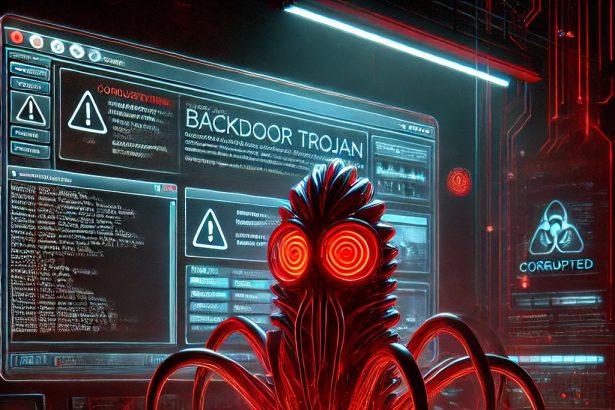Altrusica Service may sound like legitimate Windows software. In reality, it’s a sophisticated trojan masquerading as a system component. Victims experience unexplained performance slowdowns, sudden fan noise, and temperature spikes. One recent case showed a user who unknowingly installed a cracked utility only to find their machine crippled within hours. CPU usage soared past 90%, with task manager pointing to a suspicious process labeled “AltrusicaService.exe.”
Threat Overview
This is a multipurpose Windows trojan, combining cryptocurrency mining with data exfiltration. It poses as a helpful service or optimization tool while hijacking hardware to mine crypto. In parallel, it may install backdoors, disable protections, and leak sensitive information. Users rarely notice until system responsiveness collapses.
Key Details Table
| Field | Details |
|---|---|
| Threat type | Trojan / CoinMiner / Infostealer |
| Aliases | Altrustix, Altrisk, Altruistic |
| Symptoms | Overheating, 80%+ CPU/GPU load, lag, crashes |
| Damage | Resource abuse, data theft, crypto wallet compromise, hardware strain |
| Distribution | Cracked software, fake installers, phishing links, malvertising |
| Detection names | AltrusicaService.exe, AltrustixService.exe |
| Removal tool | SpyHunter, TotalAV, Gridinsoft |
| Severity | High |
In-Depth Analysis
Infection Vector
Common delivery methods include:
- Software cracks or keygens bundled with malware
- Fake Windows or browser updates
- Email attachments disguised as invoices or documents
- Obfuscated payloads dropped via malicious ads or drive-by sites
Behavioral Profile
- Deploys as a persistent service (e.g., AltrusicaService.exe)
- Creates scheduled tasks for automatic relaunch on reboot
- Hijacks CPU and GPU resources to mine cryptocurrencies like Monero
- Drops secondary payloads including credential stealers
- Alters Windows registry keys to evade removal and relaunch itself
- May disable or bypass antivirus software
Risk Assessment The threat ranks as high severity due to its stealth, persistence, and dual damage potential. In one forum post, a user discovered 12 background tasks tied to the miner, each re-spawning when terminated. Left unchecked, it degrades system hardware, drains electricity, and may expose login credentials or crypto wallets.
Manual Removal of Trojan Malware
Important: Manual removal is not recommended for beginners. It involves interacting with system files and the Windows Registry, which, if done incorrectly, can lead to system issues.
Step 1: Restart in Safe Mode with Networking
Booting into Safe Mode disables unnecessary startup programs, including most malware.
- Press Windows + R, type
msconfig, and hit Enter. - In the System Configuration window, go to the Boot tab.
- Check Safe boot, then select Network.
- Click Apply and restart your computer.
Step 2: Terminate Malicious Processes
- Open Task Manager using Ctrl + Shift + Esc.
- Navigate to the Processes or Details tab.
- Identify any unusual or unrecognized processes. Be cautious—do not stop critical Windows processes.
- Right-click a suspicious process, choose Open File Location, then End Task.
- Delete the associated file from the opened folder.
Step 3: Delete Trojan Files
- Press Windows + R, type
%appdata%, and press Enter. - Check for any unknown folders created recently.
- Repeat the same for these directories:
%localappdata%C:\Program FilesC:\Program Files (x86)C:\Windows\Temp
- Delete any folders or executables related to the Trojan.
Step 4: Clean Up the Windows Registry
- Press Windows + R, type
regedit, and press Enter. - Go to these registry paths:
HKEY_LOCAL_MACHINE\SOFTWARE\Microsoft\Windows\CurrentVersion\RunHKEY_CURRENT_USER\SOFTWARE\Microsoft\Windows\CurrentVersion\Run
- Look for registry entries with unusual names or links to suspicious files.
- Right-click and delete the unwanted entries.
Tip: Back up your registry before making changes by clicking File > Export in the Registry Editor.
Step 5: Reset Your Web Browsers
Malicious Trojans often tamper with browser settings to redirect users to unwanted sites.
Chrome
- Settings > Reset and clean up > Restore settings to their original defaults.
Firefox
- Help > More Troubleshooting Information > Refresh Firefox.
Edge
- Settings > Reset settings > Restore settings to their default values.
Step 6: Perform a Full System Scan with Windows Defender
- Open Windows Security from the Start menu.
- Click Virus & threat protection > Scan options.
- Choose Full Scan and click Scan now.
Step 7: Update Windows
- Go to Settings > Windows Update.
- Click Check for updates and install all available patches.
Method 2: Automatically Remove Trojans Using SpyHunter
Manual removal can be effective, but it’s time-consuming and may leave hidden components behind. SpyHunter is a trusted malware removal tool that automatically detects and eliminates Trojans and other threats.
Step 1: Download SpyHunter
Use the official download link: Download SpyHunter
Follow these instructions for installation: SpyHunter Download Instructions
Step 2: Install the Program
- Locate the downloaded file, usually SpyHunter-Installer.exe.
- Double-click it and follow the on-screen steps to complete the installation.
- Launch SpyHunter when finished.
Step 3: Scan Your PC
- Click the Start Scan Now button on the SpyHunter dashboard.
- Allow the scan to complete (it may take several minutes).
- Review the detected items.
Step 4: Remove Threats
- Click Fix Threats.
- SpyHunter will quarantine and remove the detected Trojan files automatically.
Step 5: Restart Your PC
Once the cleanup is finished, restart your system to finalize the changes.
Trojan Prevention Tips
- Avoid downloading software from unofficial sources.
- Be wary of email attachments, even from known contacts.
- Keep Windows and applications updated with the latest patches.
- Use a reputable security program like SpyHunter for active malware protection.
Conclusion
Altrusica Service is a wolf in sheep’s clothing—a parasitic trojan that looks like a utility but devours your system from within. Its ability to silently consume resources, evade detection, and re-establish itself makes it particularly dangerous. Manual removal can work, but a reputable anti-malware tool ensures the infection is gone for good. Early detection and complete system hygiene are key to keeping this threat off your radar.




